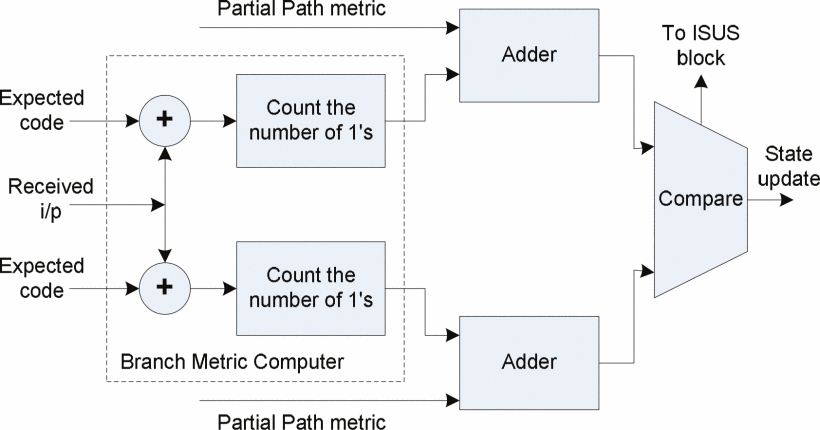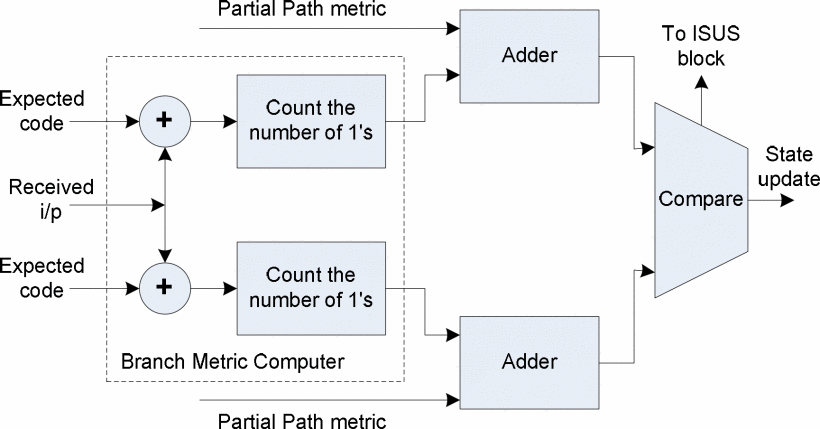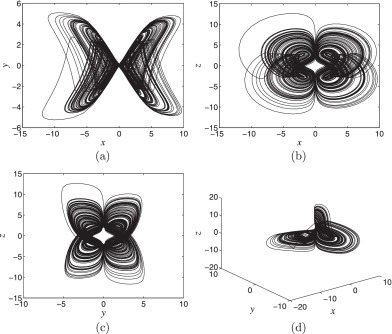
FPGA implementation of a reconfigurable Viterbi decoder for WiMAX receiver
Field Programmable Gate Array technology (FPGA) is a highly configurable option for implementing many sophisticated signal processing tasks in Software Defined Radios (SDRs). Those types of radios are realized using highly configurable hardware platforms. Convolutional codes are used in every robust digital communication system and Viterbi algorithm is employed in wireless communications to decode the convolutional codes. Such decoders are complex and dissipate large amount of power. In this paper, a low power-reconfigurable Viterbi decoder for WiMAX receiver is described using a VHDL code for

FPGA implementation of a configurable viterbi decoder for software radio receiver
Convolutional codes are one of the Forward Error Correction (FEC) codes that are used in every robust digital communication system. Viterbi algorithm is employed in wireless communications to decode the convolutional codes. Such decoders are complex and dissipate large amount of power. Software Defined Radio (SDR) is realized using highly configurable hardware platforms. Field Programmable Gate Array technology (FPGA) is a highly configurable option for implementing many sophisticated signal processing tasks in SDR. In this paper, a generic, configurable and low power Viterbi decoder for
Fibonacci-based hardware post-processing for non-autonomous signum hyperchaotic system
This paper presents a hardware implementation of a robust non-autonomous hyperchaotic-based PRNG driven by a 256-bit LFSR. The original chaotic output is post-processed using a novel technique based on the Fibonacci series, bitwise XOR, rotation, and feedback. The proposed post-processing technique preserves the throughput of the system and enhances the randomness in the output which is verified by successfully passing all NIST SP. 800-22 tests. The system is realized on a Xilinx Virtex 4 FPGA achieving throughput up to 13.165 Gbits/s for 16-bit bus-width surpassing previously reported CB
Cad tool for two-digit ternary functions design
Ternary number, which attracts the research attention for its high capacity, has emerged in many applications, recently. Unlike binary numbers, two bit ternary number involves 93 = 729 different functions while two bit binary number involves only 42 = 16 different possible functions. In this paper, a novel automatic software description two bits ternary functions design tool is presented. Different examples are provided and synthesized to ternary logic circuits. Finally, the presented logic circuits are verified by SPICE simulation using carbon nano-Tube (CNTFET) transistors. © 2019 IEEE.
Controllable OTA Slew-rate for CMOS Image Sensor
In this work, a proposed circuit is implemented using tsmc 0.18um technology of area 16642 um2 with supply voltage equals 5V. A proposed implementation of a controllable Operational Transconductance Amplifier (OTA) slew rate for CMOS image sensor (CIS) is proposed. The slew rate is controlled by switching between various bias circuits for the OTA. The biasing circuit controls the value of OTA biased current, which allows controlling the amplifier's characteristics. As the flicker noise in the main contributor in reducing the quality of image sensors performance. The proposed circuit allows

Four-wing attractors in a novel chaotic system with hyperbolic sine nonlinearity
Chaotic systems generating multi-wing attractors have received considerable attention in the literature. In this work, we propose a novel three-dimensional chaotic system with hyperbolic sine nonlinearity. It is worth noting that the system is elegant and includes only one parameter. Despite its simple structure, the new system displays double-wing and four-wing chaotic attractors. By studying dynamics of the system, coexistence of limit cycles or chaotic attractors is discovered. The capable of the synchronization of new chaotic system is verified by using an adaptive control. Furthermore, an
Chaos-based hardware speech encryption scheme using modified tent map and bit permutation
This paper proposes a speech encryption scheme based on a generalized modified chaotic tent map and bit permutation and presents its hardware realization. The generalization scales the output range and increases the key space. The modification controls the bounds on the output range through a parameter such that chaotic output exists for almost all values of the parameter. The security and efficiency of the speech encryption scheme are validated through the randomness of the encrypted signal, the key sensitivity and the hardware resources utilization. The proposed scheme utilizes less FPGA

Reconfigurable chaotic pseudo random number generator based on FPGA
This paper presents an FPGA Pseudo Random Number Generator (PRNG) that is based on the Lorenz and Lü chaotic systems. These two systems are used to generate four different 3D chaotic attractors. One attractor is generated from Lorenz while the other three attractors are generated from Lü. The output attractor of the proposed PRNG can be reconfigured during real time operation using an efficient hardwired shifting and multiplexing scheme. Furthermore, in order to exploit the proposed reconfiguration feature, the proposed PRNG has been embedded in an FPGA cascaded encryption processor that
FPGA realization of speech encryption based on modified chaotic logistic map
This paper presents an FPGA design and implementation of a chaotic speech encryption and decryption system based on bit permutations. Different encryption schemes are realized and compared. In addition, various testing methods including entropy, mean squared error, and correlation coefficients are used to analyze the efficiency of the system. The techniques for area and delay minimization are used. Carry look-ahead adder, multi-operand adder and booth multiplier are used to improve the performance of the encryption schemes design. A comparison between the different encryption architectures and
FPGA Speech Encryption Realization Based on Variable S-Box and Memristor Chaotic Circuit
This paper introduces a new encryption/decryption scheme based on a dynamic substitution box concept. Values of the proposed S-Box are different for each sample depending on the behavior of a memristor-based chaotic system. MATLAB simulations and FPGA implementation for the circuit are presented with throughput 4.266 Gbit/s. Also, FPGA realization for encryption/decryption scheme is proposed. Entropy, MSE, correlation coefficient tests are applied on two different input files to examine the efficiency of this cryptosystem. © 2018 IEEE.
Pagination
- Previous page ‹‹
- Page 49
- Next page ››
